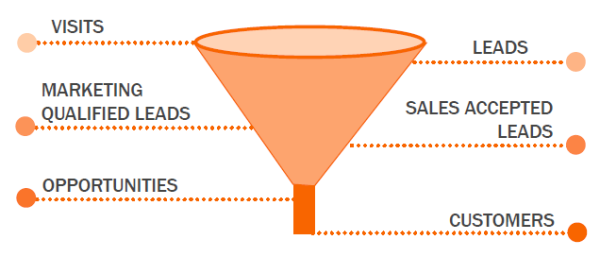Top 6 Funnel Metrics to Track for High-Converting Leads

Every business relies on a steady stream of leads in order to grow and prosper. That is why you need a lead generation funnel that attracts quality leads and moves them down the funnel.
What is a Lead Funnel?
A lead funnel is the journey that buyers make from becoming aware of your brand to becoming paying customers.
To create a lead funnel strategy, you need to start by understanding the steps your buyers go through before becoming customers. There are three key aspects to consider when designing your lead generation funnel:
- Understand where your leads are coming from and where you can find more of them
- Map out your buyer journey at each stage and create content to attract and convert leads into customers
- Leverage the right mix of tools to deliver the content, capture information, and qualify the leads for your sales and marketing teams.
This is where the magic of marketing happens. You’re pulling together all of these different elements to create a better lead-to-customer experience that drives sales and revenue. By creating an engaging and nurturing process with campaigns and defined Key Performance Indicators (KPIs), you can convert more leads into meaningful sales discussions, meetings/demos and opportunities. The more people who enter the funnel at the top, the more chances to move them down the pipeline to closed-won opportunities. See the figure below.

Now that you know what a lead generation funnel is and how it works, it’s time to set your KPIs and metrics to track your success. Let’s look at how you can use these metrics and industry benchmarks to build a steady stream of leads in your sales funnel.
Lead Funnel Metrics
1. Web Visitors to Leads
The first step is driving traffic to your site and converting website visitors into leads. You want to make it easy for them to contact you via a contact, schedule a demo, or freebie form to download a piece of relevant content (e.g. Ebook, Guide, checklist). Add call-to-actions (CTAs) and other offers throughout your website to give yourself the highest chance of converting your website visitors into leads. The key here is to engage and convert. We recommend a 1-3% conversion rate should be the goal.
2. Leads to MQLs
Now, you want to turn leads into Marketing Qualified Leads (MQLs). The marketing team is responsible for passing qualified leads to the sales team. A typical lead is someone who has expressed an interest in your product or service. If a website lead has been assessed by the marketing team and determined to be qualified by matching certain criteria, it can then be converted into an MQL and sent to the sales team for follow up.
3. MQLs to SQLs
When sales receives an MQL, they then ask questions to further qualify the lead to ensure BANT, which is an acronym for budget, authority, needs (level of pain), and timeline. BANT is a type of sales lead qualification process designed to identify leads that are worth pursuing and to turn them into a Sales Qualified Lead (SQL). Typically, this lead has expressed enough interest to warrant an email or phone call from a sales representative. The average MQL to SQL conversion rate is 13%. However, it can be higher for B2B companies.
4. SQL to Opportunity
Once sales talk to an SQL, they can determine if there is an opportunity there. The lead has given the sales representative an indication of a high probability of becoming a customer and is a good fit for what they’re selling. This stage of the funnel process is key to leads becoming paying customers. The salesperson should be answering all questions and explaining their product or service to help the lead justify purchasing.
5. Opportunity to Closed-Won
Finally, an opportunity moves to closed-won. Payment is made, and the sale is complete. Recently, I worked with a technology company to help them build a marketing and sales lead engine where they saw an increase of 3560% in Year 1 and 60% in Year 2 in Marketing Qualified Leads (MQLs) and 60% revenue growth.
It’s crucial to create an effective funnel to obtain more leads and therefore, sales. Start thinking about your lead generation strategy to set your organization up for success. If you need assistance creating a funnel strategy, schedule a 30-minute assessment with our team.

